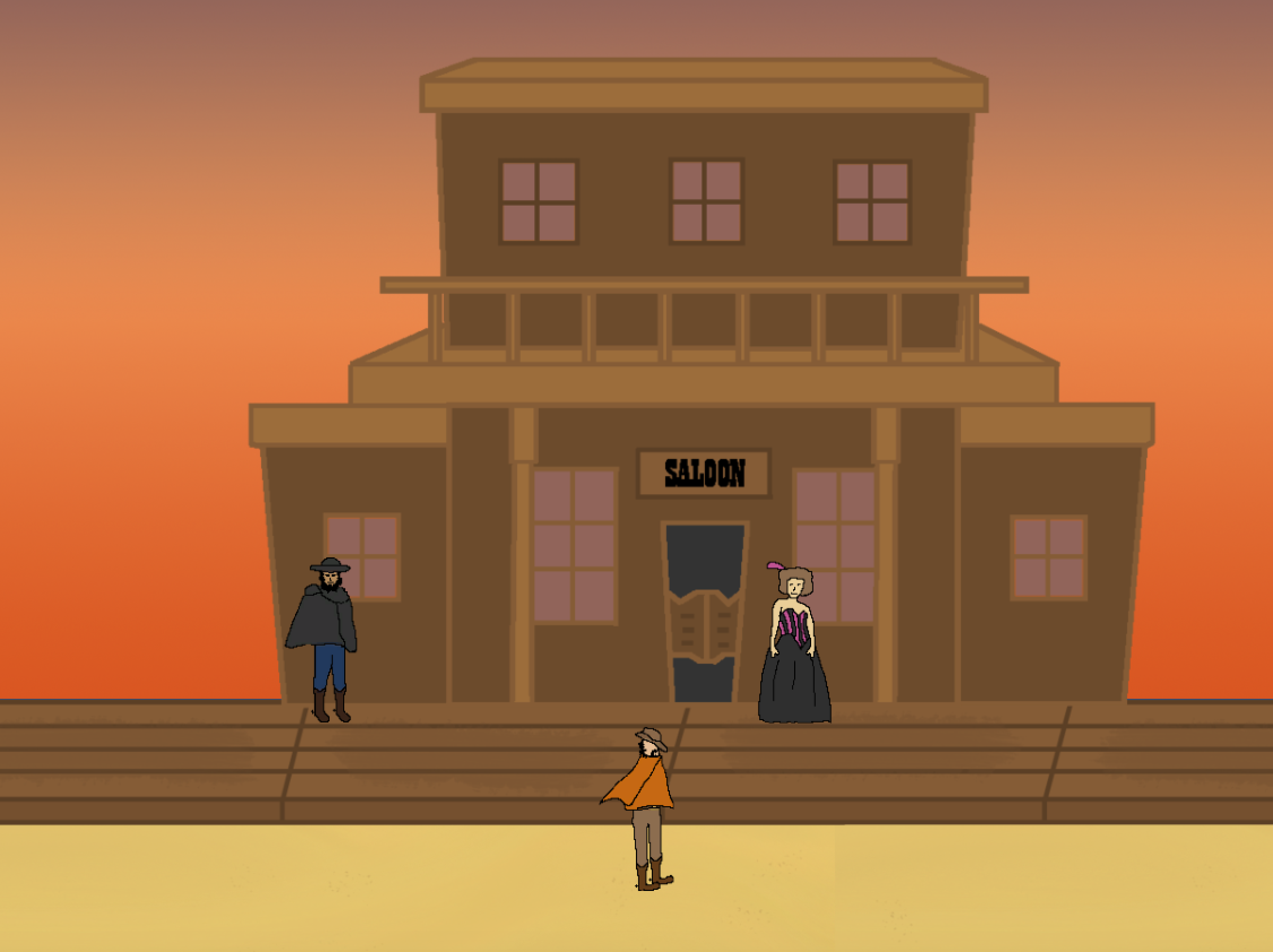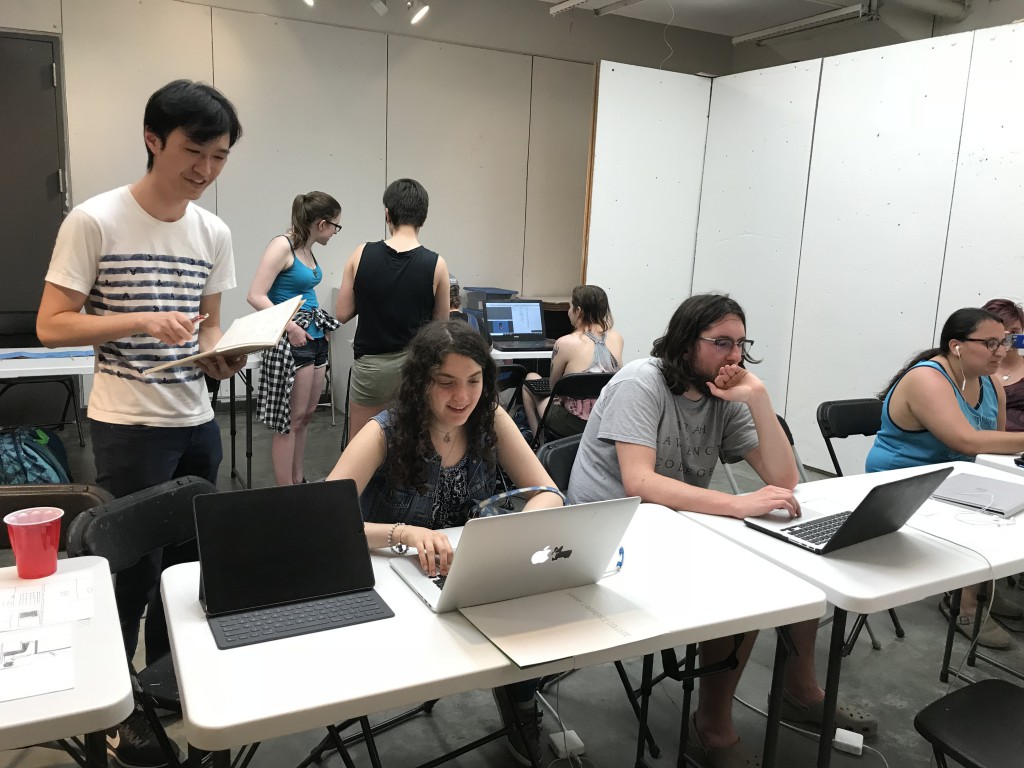
Wild Tale is a game that takes place on the movie set of an old west movie. The player controls a traveling cowboy who is looking for a place to settle down. The player will need to make choices that determines the type of cowboy he becomes.
This game is about the construction of identity. The game mechanics reveals to the player they are able to become the person they want to be through their actions. The interactions with the movie set reminds them of the constructed nature of reality. The game pokes fun at the myth of the Wild West subtle commentary on the way media affects the way we act.
My game is a response to escapism media. Many forms of entertainment get praised for the ability to immerse the audience in a new world and become someone else. However, they are often more reinforcing and restrictive instead of empowering. I want to call attention to the reinforcement that media can have on our perception of self and empower people to reexamine their self-perception.
My game subverts the typical idea that the player character has predeveloped personalities. Instead, the player character’s personality is shown only through the player’s actions. Instead of the player becoming a character, he or she inhabits the shell of the character and interacts with the world through that.
There are some games that emphasize on player choices. However, games with narratives like The Walking Dead by Telltale Games rely on analogue choices where the options are clearly presented. In my game, some of the options are not immediately obvious and there are no pop-up dialogue options to choose from. In a silent movie, the characterization is done mostly through actions. This choice reflects my answer to how I think one can express their identity. In real life, I think the thing that people can do to express themselves is through action.
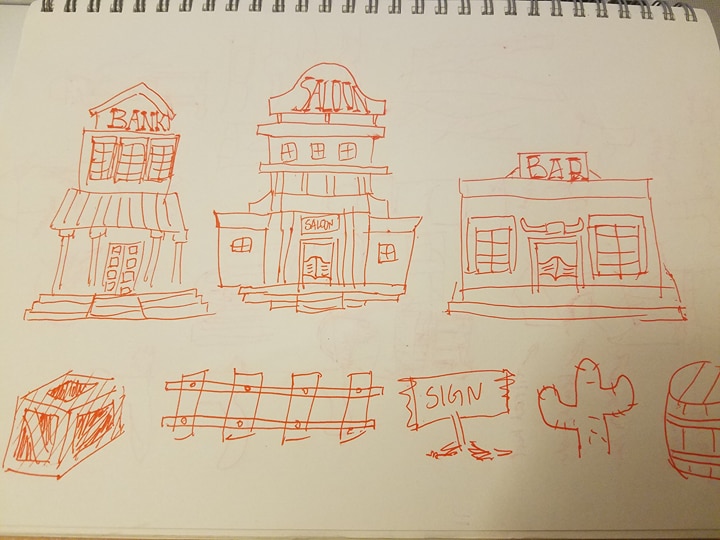
I watched some old western movies as research for my game. I think the one that influenced me in term of aesthetics was The Good, Bad, and the Ugly. I think the movie fits very well within the stereotype I wanted to critique. I used the parts I thought were representative of the old west as influence to help me reference the genre.
When I researched western games, I was very surprised to find a game similar to my own. Westerado is also a game also about creating narrative by giving players freedom to express themselves. However, I’d like to note I discovered the game after coming up with the idea so it is not a direct influence.
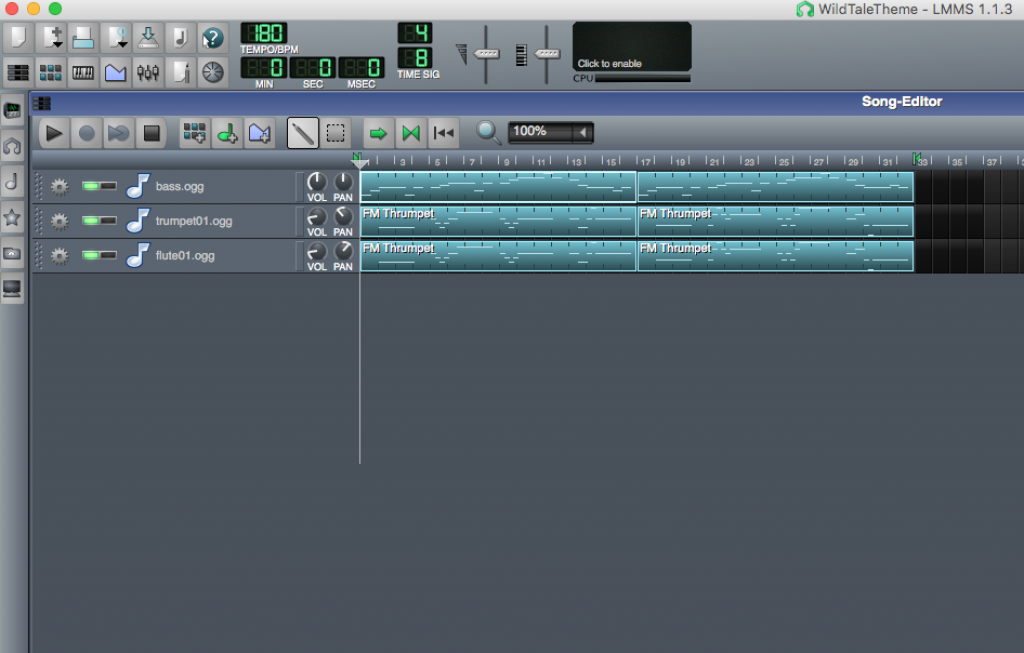
Since my last update, I’ve fine-tuned the interactions with more efficient codes to prepare for game night. I learned a lot from showing my game at game night. The movie aspect of the game isn’t obvious enough but people responded well to the concept after I explained it in the end. I got helpful suggestions and comments that inspired new features in the future. One important suggestion I got was to add more movie set elements in the game. I think adding cameras, microphones, and wires will be a major step forward for my game. Otherwise, people liked the art style and the humor in my game. I think I will be adding more humorous elements in my game in the future.
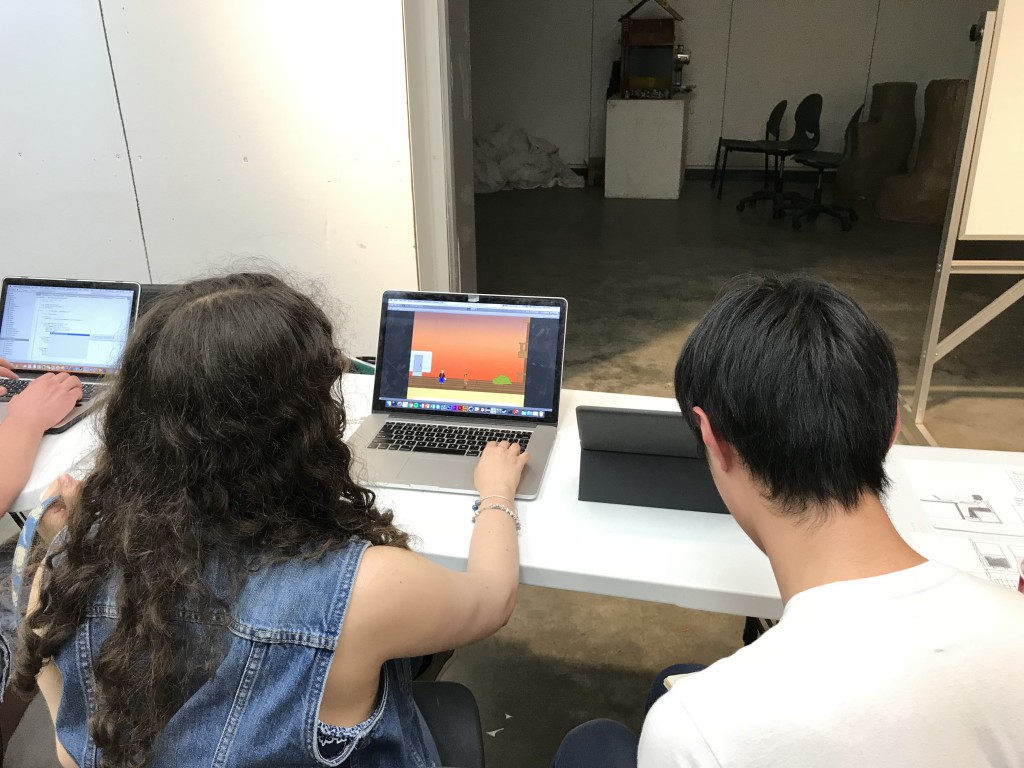
The development of this game is, in a way, a reflection of my personal growth. I didn’t come in development with a firm idea of what the story was going to be about. As a result, the story of the game changed a lot. Because I gave myself freedom to alter the story dramatically during development, the game eventually became a manifestation of what’s on my mind. The story is still evolving as I’m developing it. I’m still thinking about the idea of identity and I’m using the development of this game as a tool to help me process it.
The idea that I was going to represent the old west with the twist that the player is going between the movie and the real world stayed true to the original idea. This was the idea that sparked the development of the idea about identity and what it means. The immersion breaking aspect of that idea was interspersing to me and I based my game off that.
I wished I had planned more hitbox interactions within my paper model. I was lucky that people responded well to my digital version. However, it would’ve costed a lot more time if I had to test and iterate the interactions digitally.
It was easier than I had expected to work in Unity. Importing sprites were quick and simple. I found that my experience working with level editors in other games I’ve played helped me understand the workflow of Unity. I thought Unity would’ve been a lot of codes but I learned that a large portion of the coding is actually done visually in the inspector. Understanding this made the development process a lot smoother. Also, I was surprised by my ability to make the music for my game. I plan to continue exploring music making after this project.
It was harder than I had expected to code many of the feature I envisioned for my game. I think I was overly eager with the feature lists. I was not able to realize many of those features within the semester long timeline. I should’ve realize earlier that this process was going to be new to me and decide on a project with a scope that is more achievable.

Time management was especially important for this project since my development schedule had to align with the school’s timeline.
I wished I had budgeted more time in the beginning for creating all the assets of the game because creating assets later on I disrupted to my workflow. I noticed that when I spent time creating assets, I wouldn’t have the mental focus to be able to debug efferently. Because of this, I ended up scheduling different days for coding and asset-making. If I had known about this situation earlier, I would’ve used early development time to create a pile of assets and pick from those assets instead.
The scope of my game was too wide for a semester-long development cycle. I should’ve made my game more focused so I could polish my game to a greater extent. I was also too focused on creating the story for the whole game when I haven’t finished the first level.

